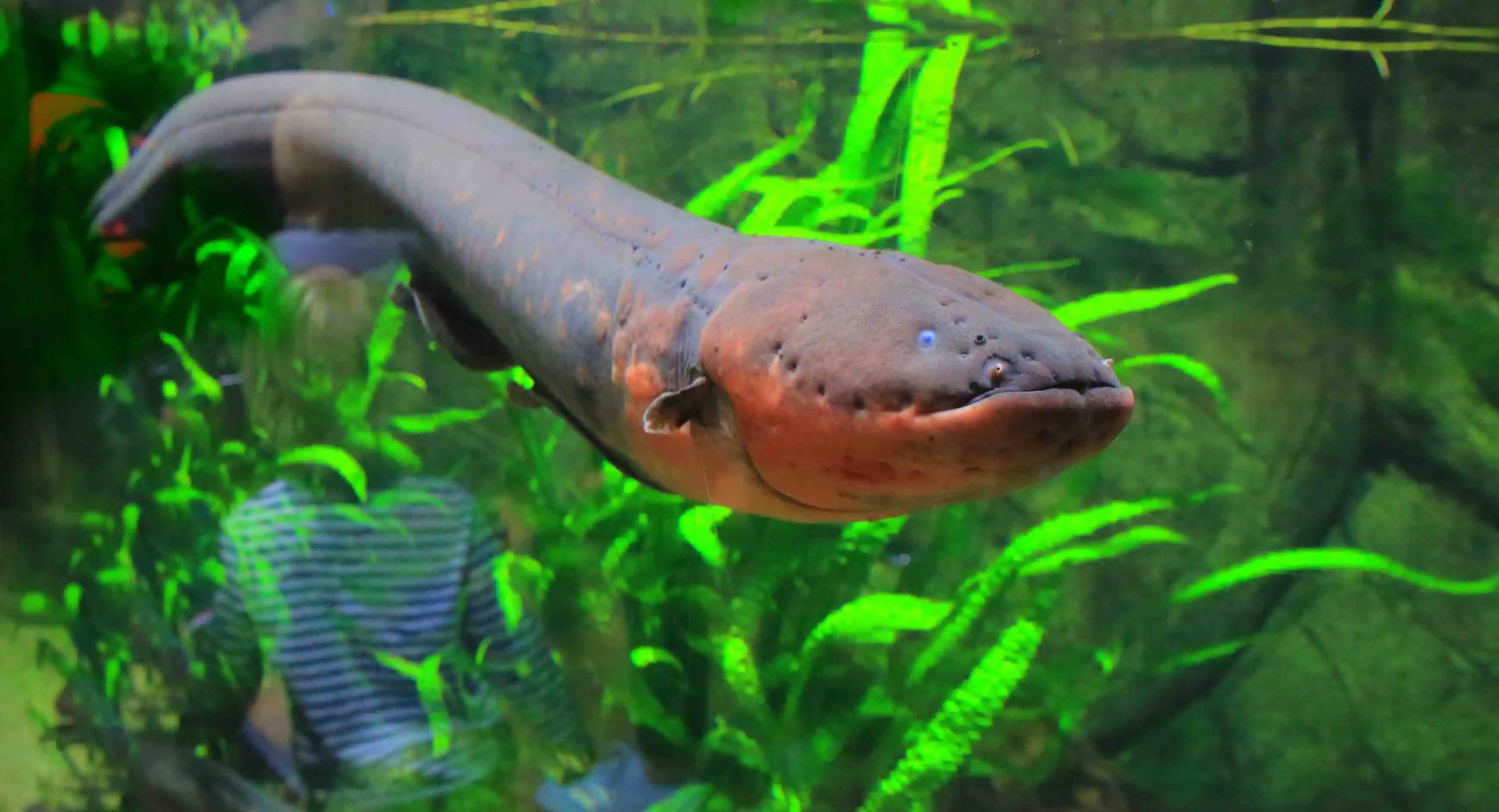Electric eel | Shockingly a Fish
One of the apex predators of the amazon river, though called an eel is more closely related to fishes is the "Electric eel" or " Electrophorus electricus ".
Despite their name, electric eels are not related to eels, but more closely related to catfishes. These eels are nocturnal, breathe atmospheric oxygen ( whilst a fish !!), have poor eyesight, but supported by their electro-location, and mainly eating fish. These fishes grow as long as they live! Which means they add a new vertebral column to their backbone as they grow. Some eels have managed to live for 20 years in captivity, growing around 2 meters (6'7'') and around 20 KG in weight, and males are larger than females.
Electric eels are like a tube, having a cylindrical body and only flattening at the tail. their body is snake-like and completely missing scales. They have their mouth on almost top of the head and have a superior jaw (a jaw in which the upper jaw opens upwards, commonly found in fish living in calmer water bodies). these fish have no lungs, so they breathe air through the help of pumping air in their buccal cavity by moving the fool rhythmically and the oxygen is absorbed through frilled mucosa, which is rich in blood vessels, helping it perform gas exchange and carbon dioxide is given out through the openings on their head, known as opercular openings.
Adult Electric eels are generally carnivores, it's meal consists of amphibians, crustaceans, small fish, invertebrates, small mammals and reptiles. The younger eels eat small invertebrates and newly hatched ones feed on their sibling eggs. They live in dark murky waters, making it difficult to see, paired with its poor vision, they depend on electroreceptors and mechanoreceptors to detect prey. Electro-receptors are primarily to detect electric current and discharge current, while mechanoreceptors detect the change in pressure of water around them, helping to pinpoint the location of their prey. when an eel detects a prey nearby, it releases a shock of electricity twice continually, called as a doublet, messing up the nervous system of the prey and causing temporary muscle failure or muscle spasms, alerting the mechanoreceptors. then the eel releases rapid pulses of electricity (as rapid as 400 each second!), paralyzing the prey, then proceeding to consume it.


Comments
Post a Comment